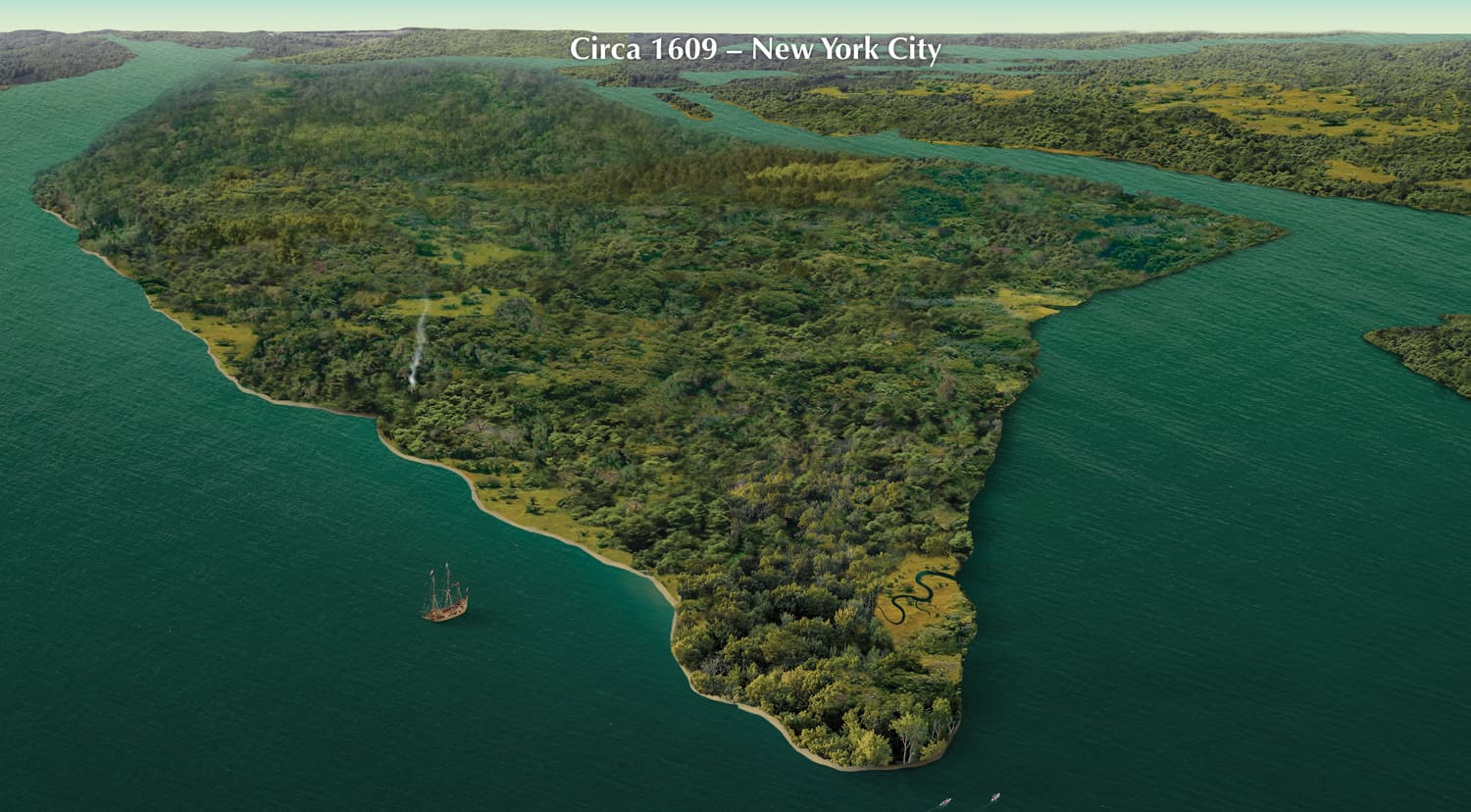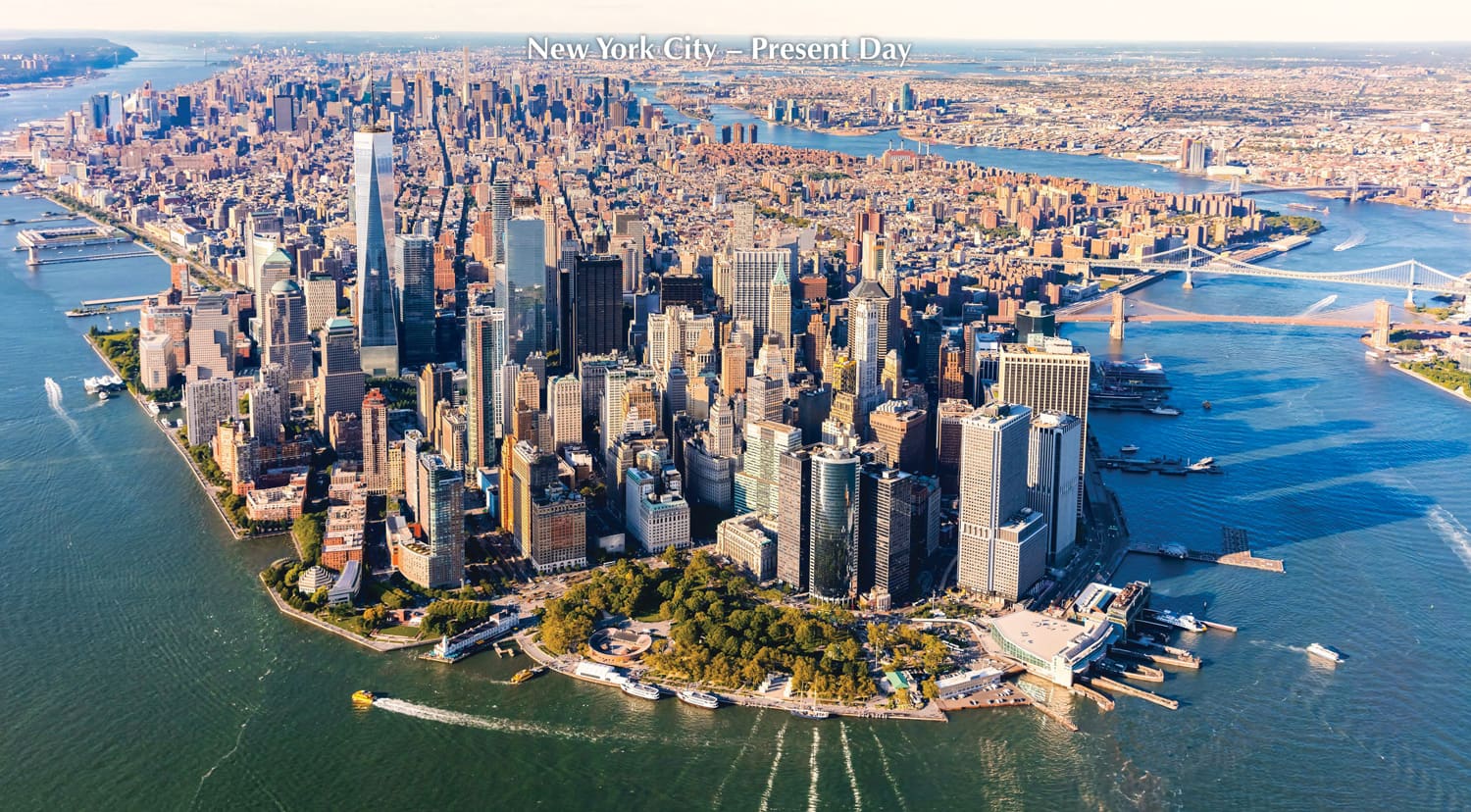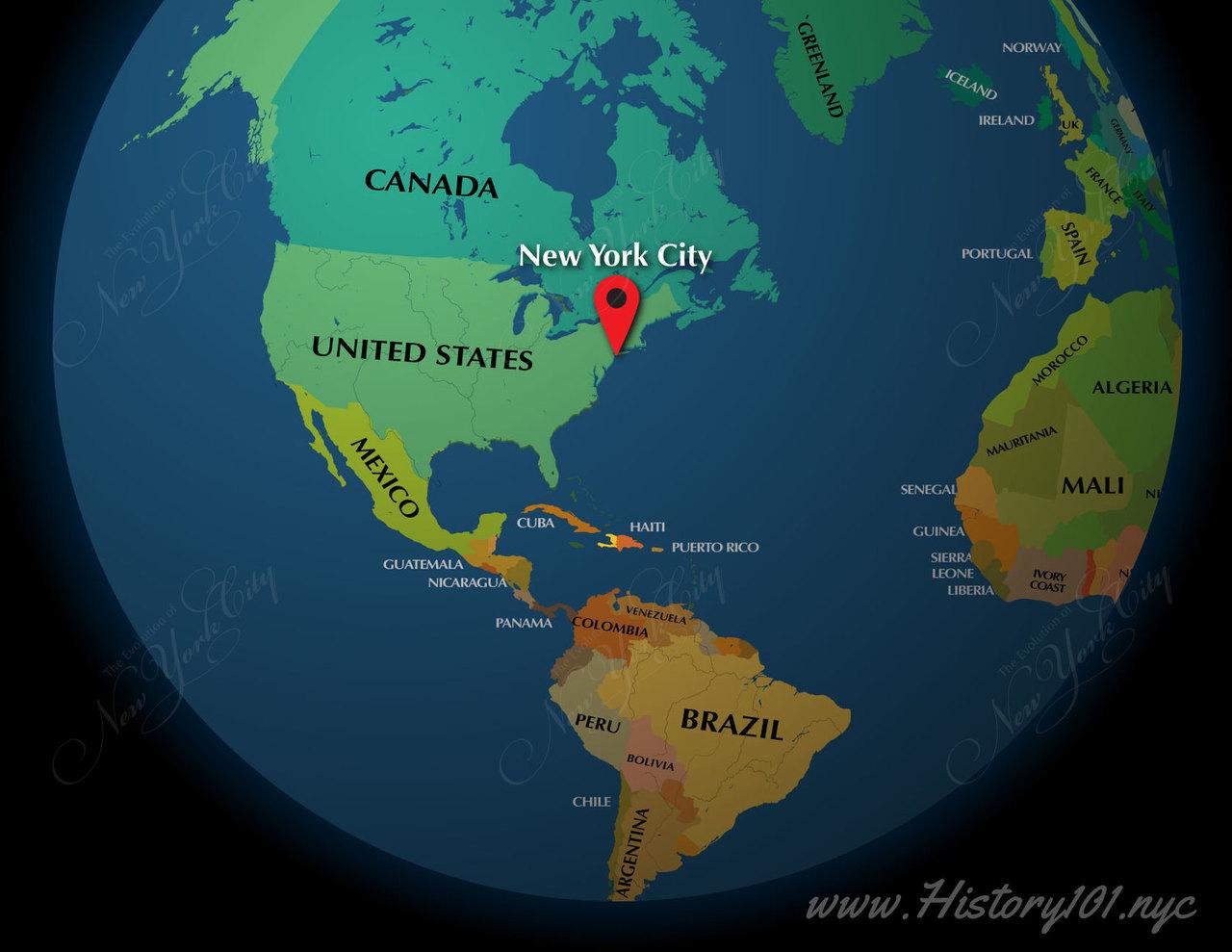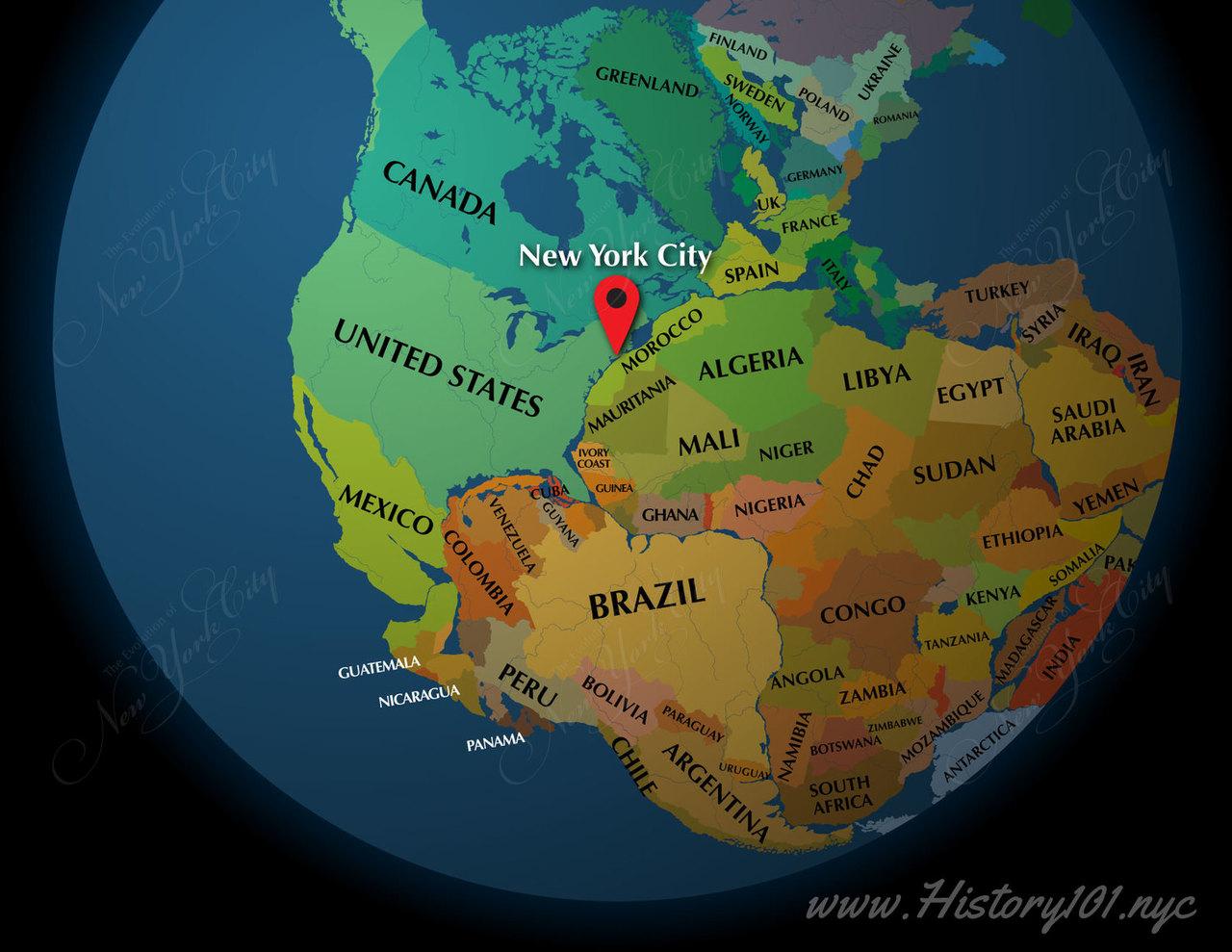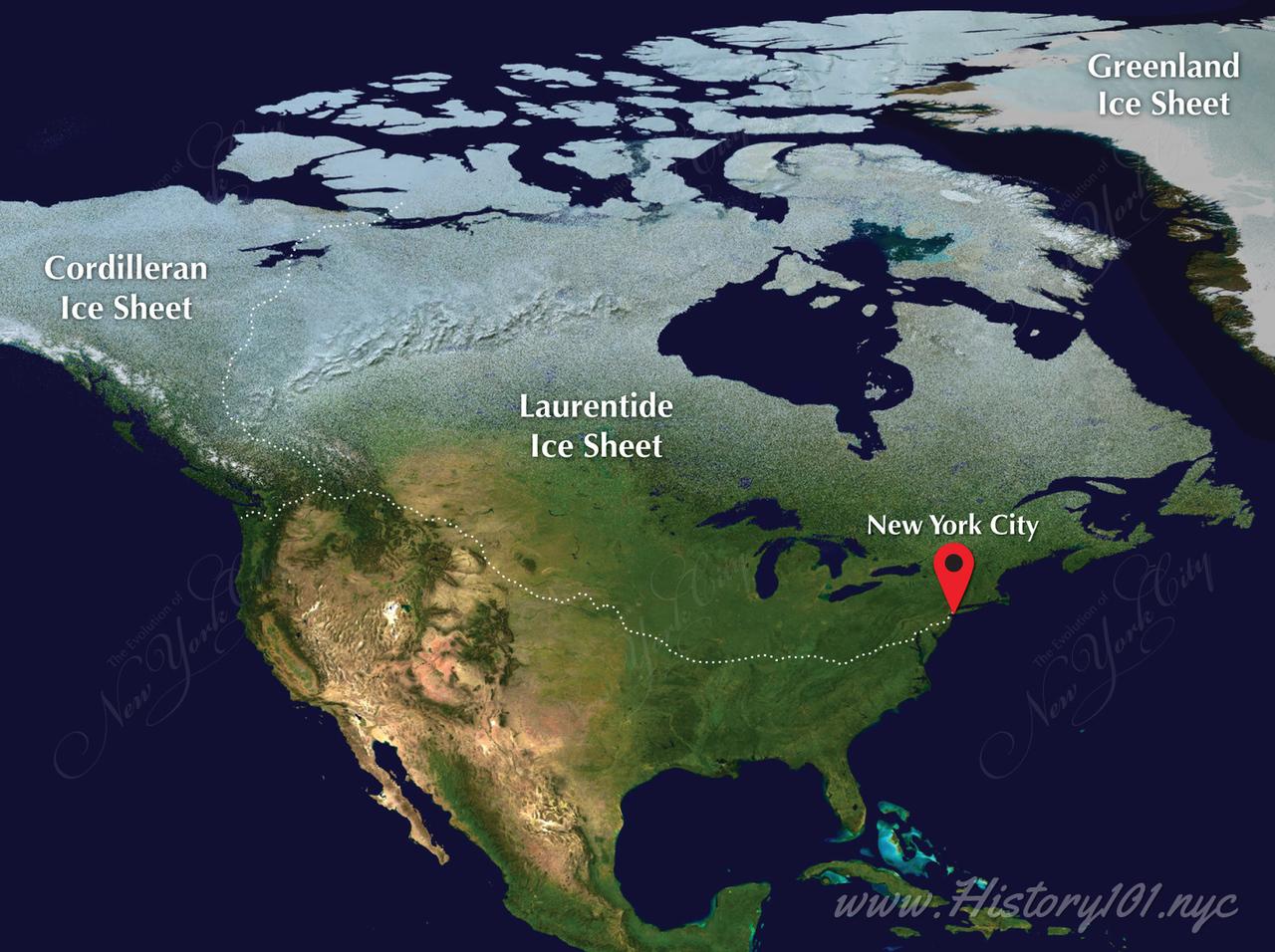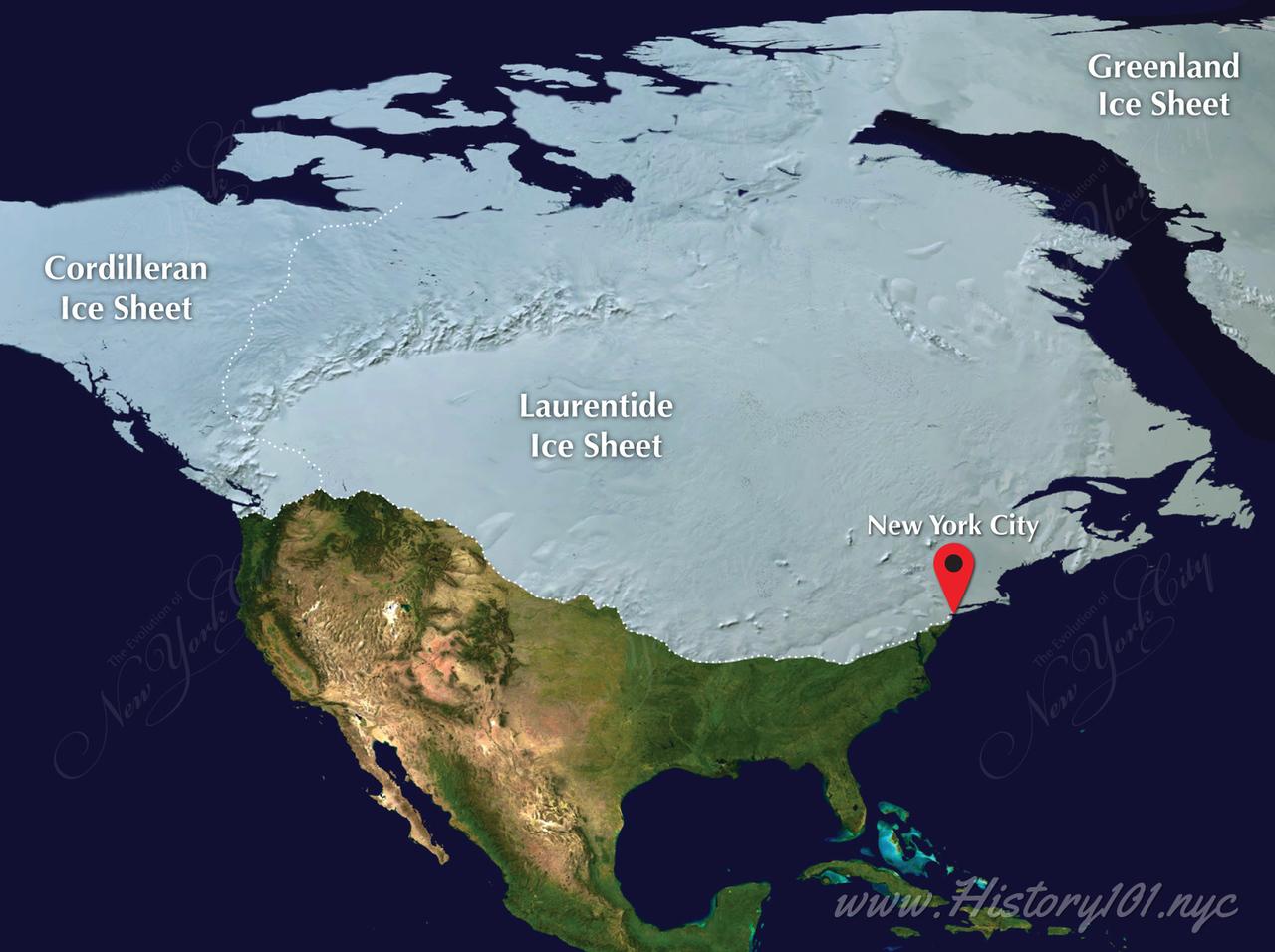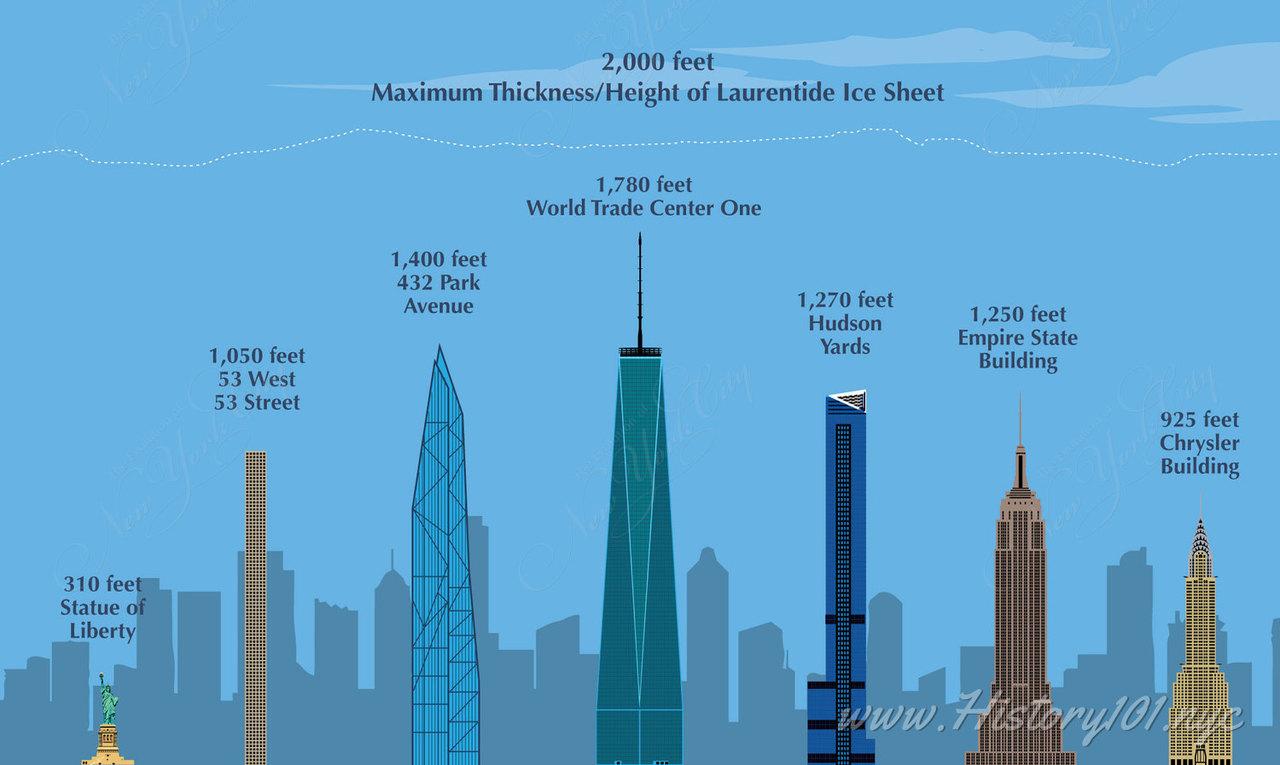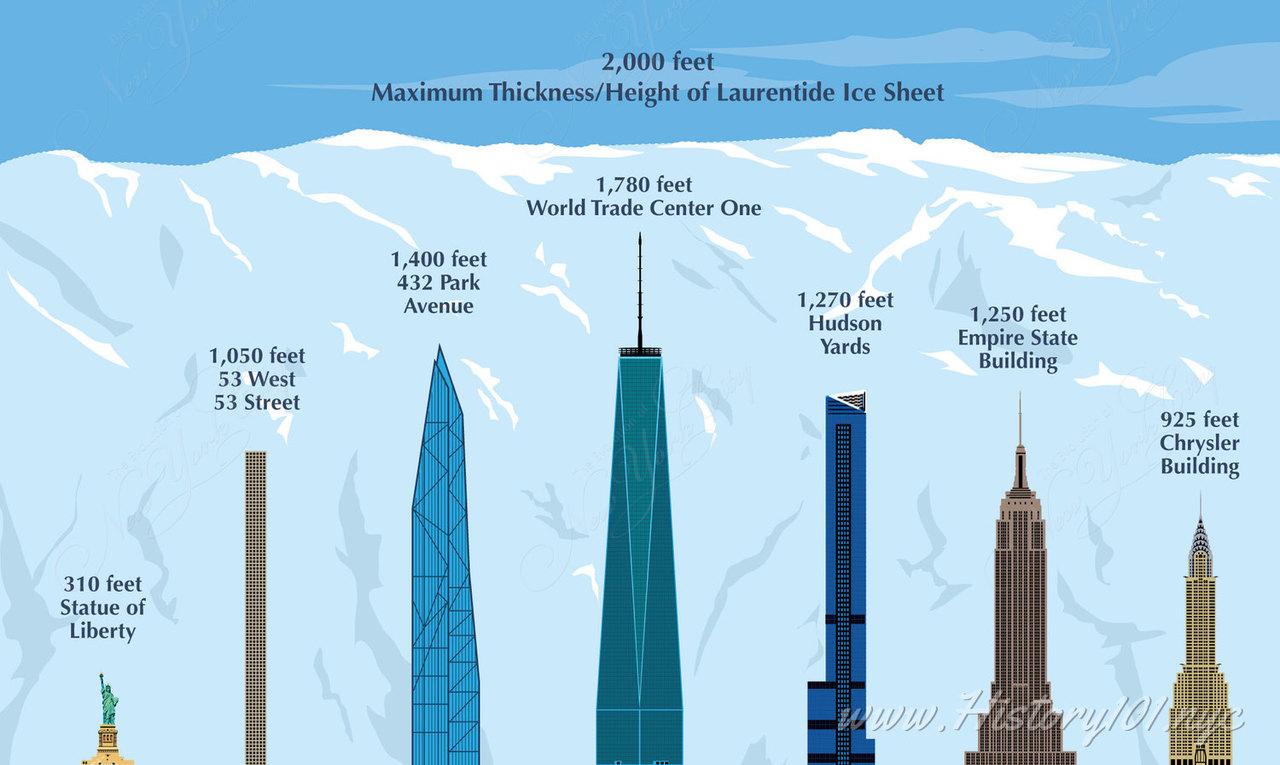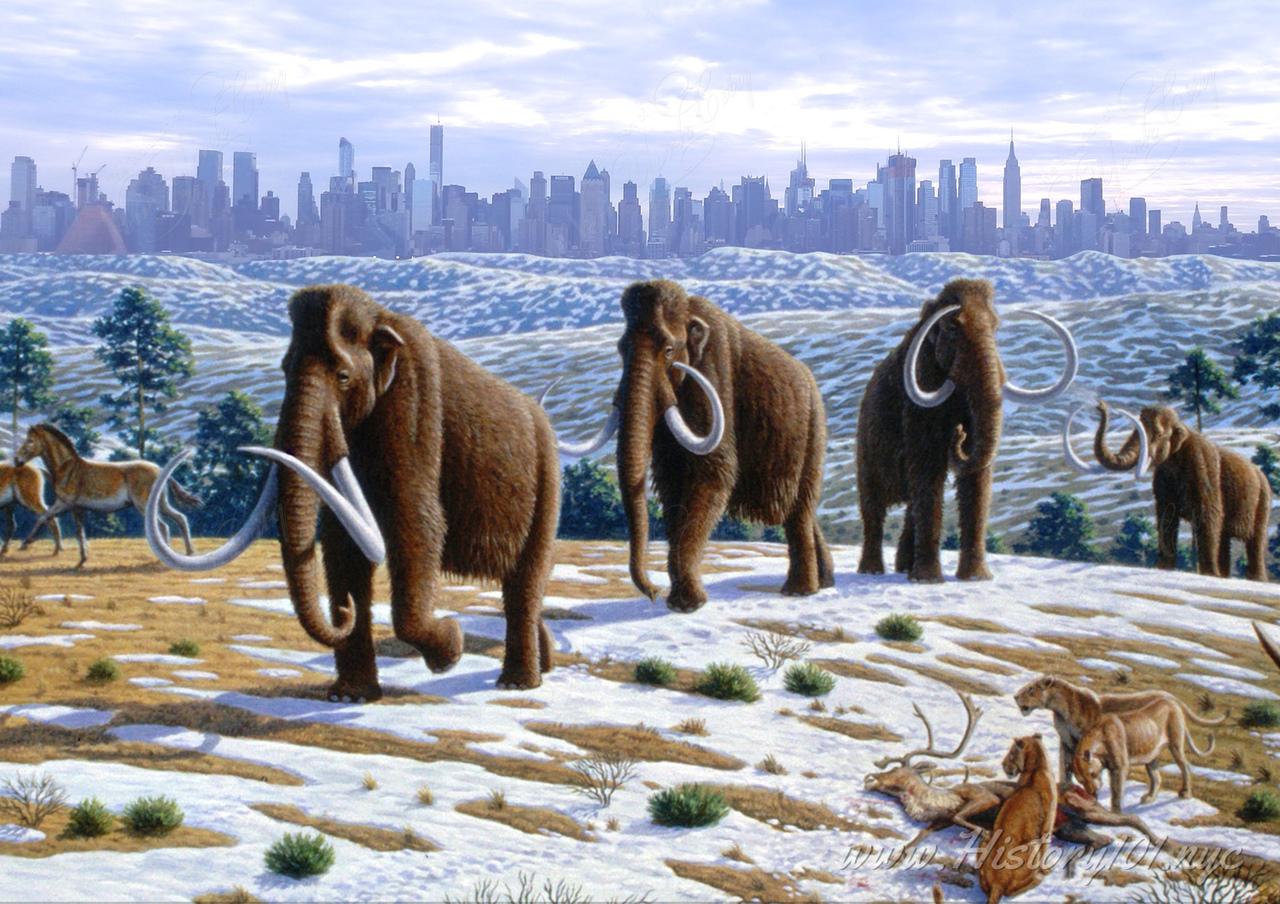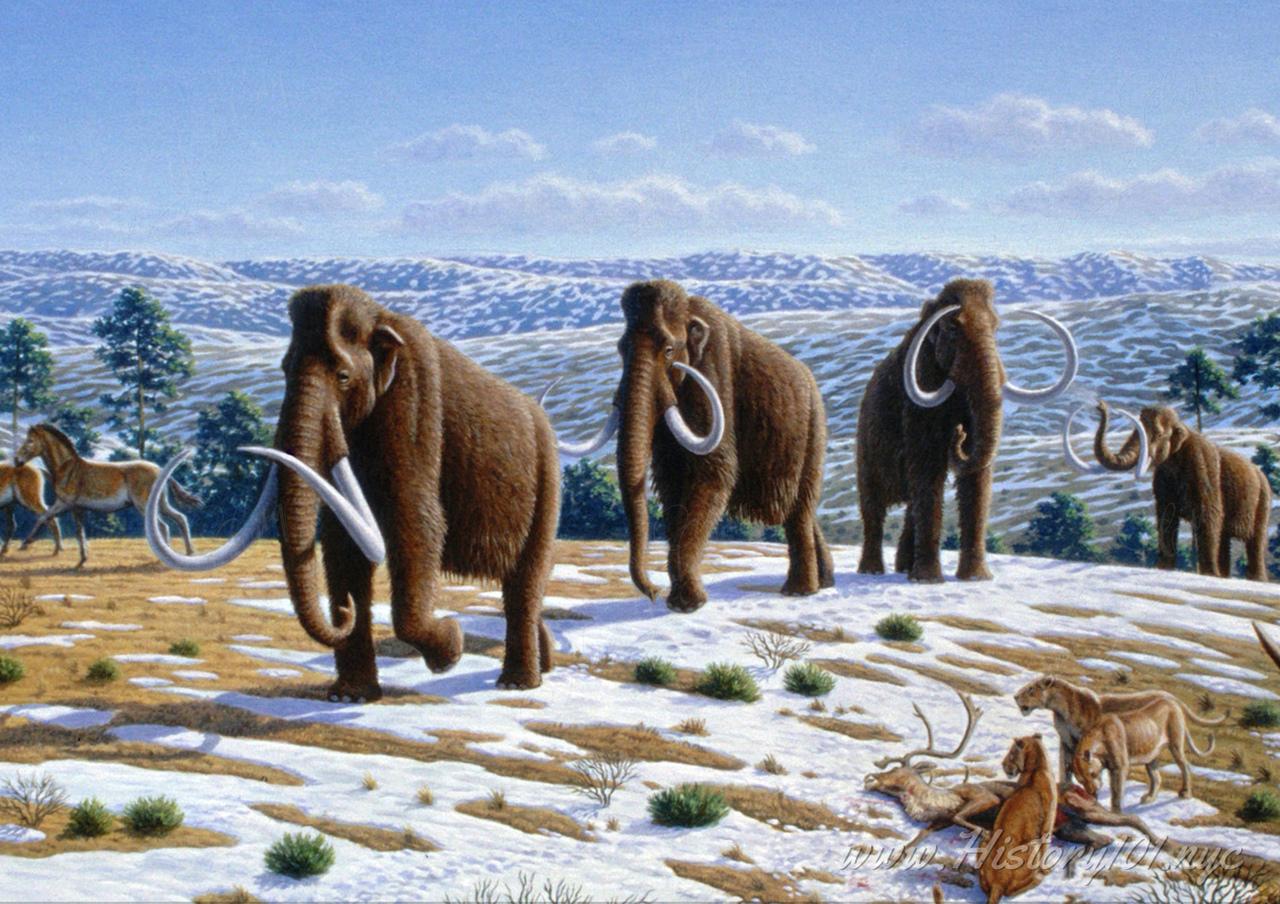
250 Million Years to Present Day NYC: Natural Wonder to World's Most Famous City
Explore NYC's transformation over 250 million years, from its origins in Pangea to becoming the world's most famous and dynamic city today
New York City’s transformation from 250 million years ago to a contemporary urban marvel encapsulates a dramatic evolution from primordial wilderness to a global metropolis. Originating in the late Paleozoic Era on the fringes of Pangea, significant geological shifts sculpted its landscape, giving rise to the Appalachian Mountains and a richly diverse environment. This long history of physical transformation laid the groundwork for the city we know today, marking the beginning of a journey from natural landscapes to one of the world’s foremost urban centers, illustrating the dynamic interplay between geological evolution and urban development.
Approximately 12,000 years ago, following the retreat of the last Ice Age, the region’s transition to lush forests teeming with wildlife set the stage for human settlement. The Lenape people, the area’s earliest known inhabitants, leveraged the fertile environment, initiating the region’s extensive human narrative. This era of early habitation underscores the natural bounty that preceded urban expansion, highlighting the profound changes over millennia that shaped the region into a habitable and eventually urbanized area, emphasizing the significant shifts from natural landscapes to cultivated and inhabited lands.
By the 17th century, a new chapter in the area’s history with the founding of New Amsterdam in 1624 by the Dutch. This marked the beginning of the area’s transformation into a colonial hub and set the foundation for New York City’s eventual rise as a center of commerce, culture, and politics. Subsequent events like the American Revolution and industrialization, coupled with waves of immigration, significantly molded the city’s demographic and architectural identity, reflecting on the immense socio-cultural and economic evolution from outpost to a bustling urban entity.
In the 19th and 20th centuries, New York City’s ascension as a financial, cultural, and political beacon highlighted its global stature, with iconic symbols like the Statue of Liberty and the Empire State Building embodying its international significance. The city’s relentless progression into the 20th century, fostering a melting pot of cultures and a nucleus of innovation, showcases its adaptability and growth. Today, NYC epitomizes human tenacity and creativity, presenting a narrative that transcends the mere transformation of terrain, celebrating the collective spirit and resilience of its people through the ages, from its geological inception to its current status as a vibrant, ever-changing metropolis.
“If Mannahatta existed today as it did then, it would be a national park – it would be the crowning glory of American national parks.”
- Dr. Eric Sanderson – Author of Mannahatta: The Natural History of New York – 2009
Timeline of New York City’s History 250 Million Years to Present Day NYC
Discover surprising historical facts about The City That Never Sleeps—explore fun, educational insights into its history, population, iconic landmarks, and more, perfect for students, history enthusiasts, and anyone curious about NYC’s rich heritage.
-250000000: The 1912 Continental Drift Theory: From Pangea to New York City
Discover how Alfred Wegener's Jan 6, 1912 theory of Pangea reshaped our understanding of Earth's continents and impacted NYC's geological evolution
-2000000: The Last Ice Age's Profound Influence on New York City's Geographical Landscape
Explore how the Quaternary glaciation, including the Laurentide Ice Sheet's retreat, shaped New York City's geographical features
-19000: Manhattan's Bedrock to Skyline: New York City's Geological Journey
Explore the pivotal role of the Laurentide Ice Sheet & Manhattan schist in shaping New York City's unique landscape & enabling its famous skyscrapers
-12000: New York City's Natural History: From the Ice Age to Urban Oasis
Discover how the retreat of the Laurentide Ice Sheet 11,700 years ago transformed New York City, fostering diverse ecosystems
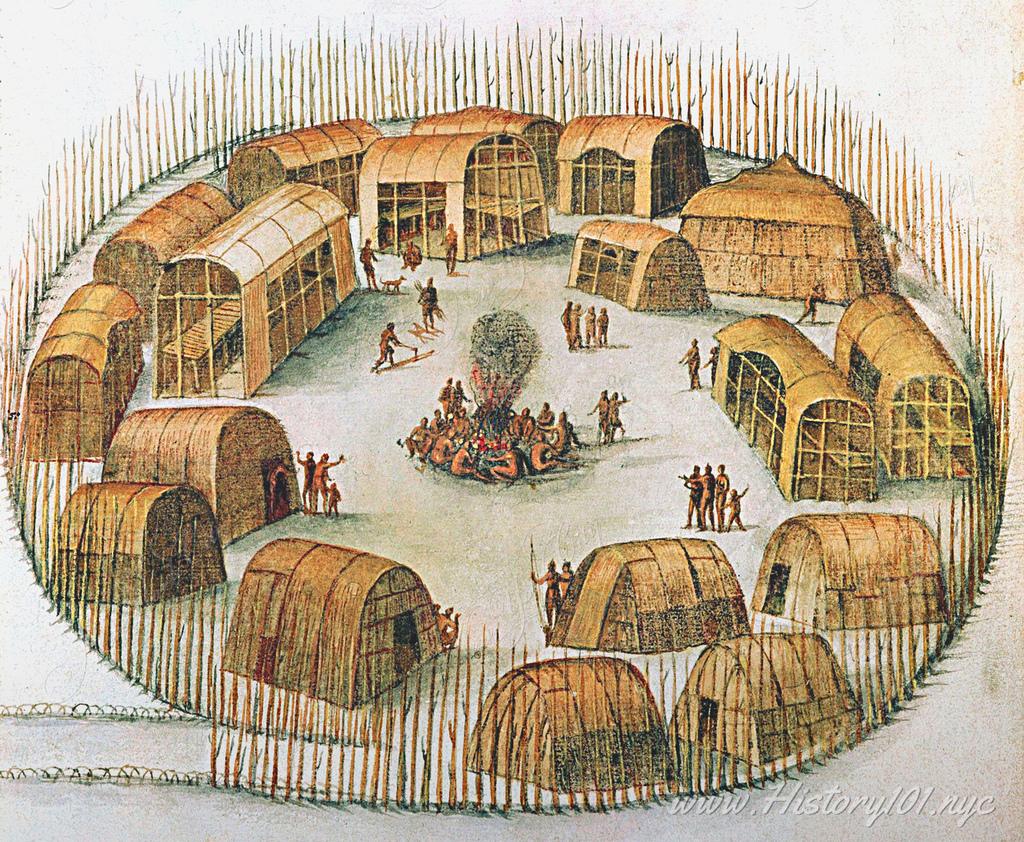
-7000: The Algonquian Settlement in the Hudson River Valley: An Ice Age Legacy
Explore the transition of Algonquian tribes from Ice Age nomads to agrarian societies in the Hudson River Valley and New York's pre-colonial history
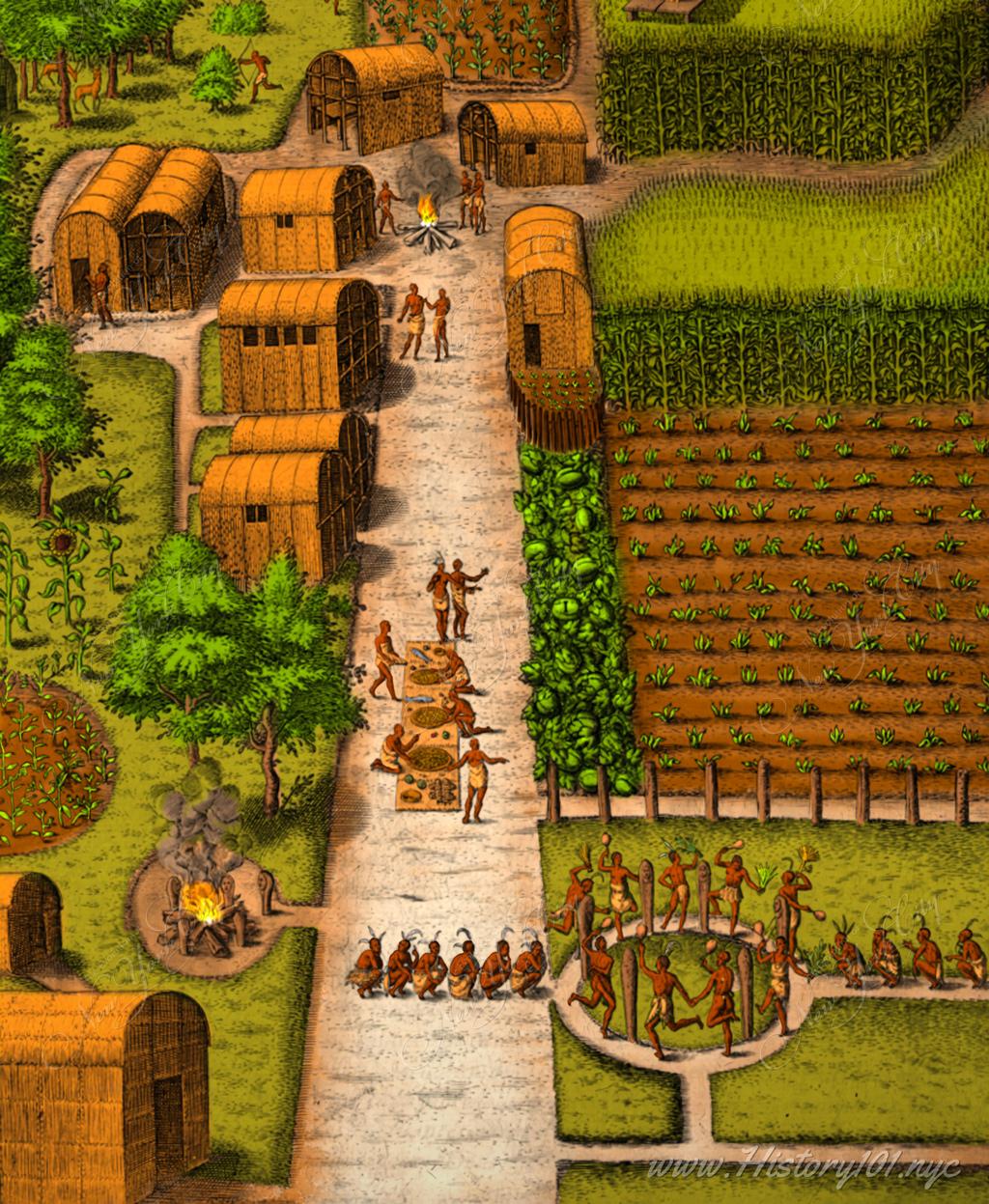
-15000: The Agricultural Revolution of Native American Groups in Northeastern America
Explore the transition of Native American groups like the Algonquians and Iroquois from nomadic to agricultural lifestyles in the northeastern U.S.
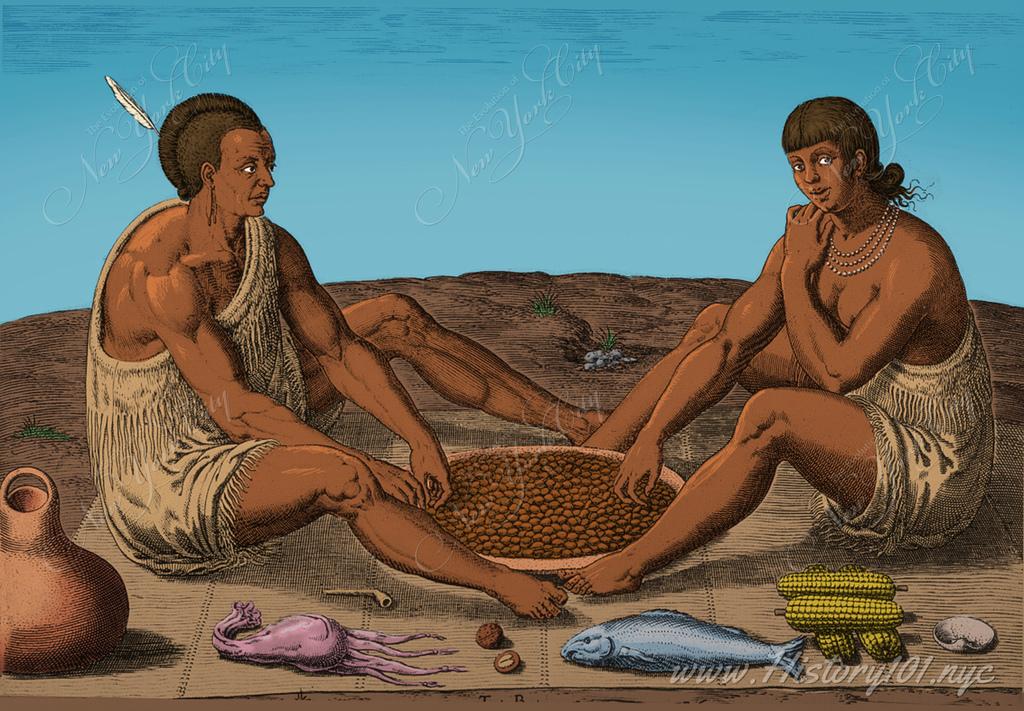
-10000: The Algonquian Diet in Pre-Dutch New York City: Embracing Nature's Bounty
Explore the varied diet of the Algonquians in future New York City areas, centered on agriculture, hunting, and fishing, and its ecological impact
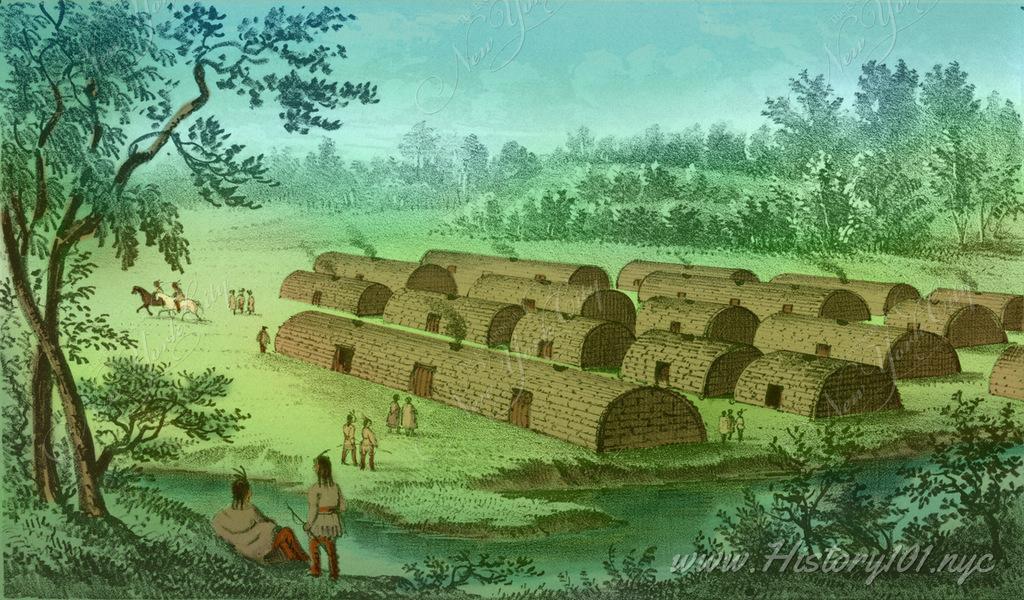
-10000: The Lenni Lenape Longhouses: Foundations of Pre-Dutch New York City
Discover the Lenni Lenape's longhouses, central to NYC's Pre-Dutch history, reflecting communal living and adaptation near waterways
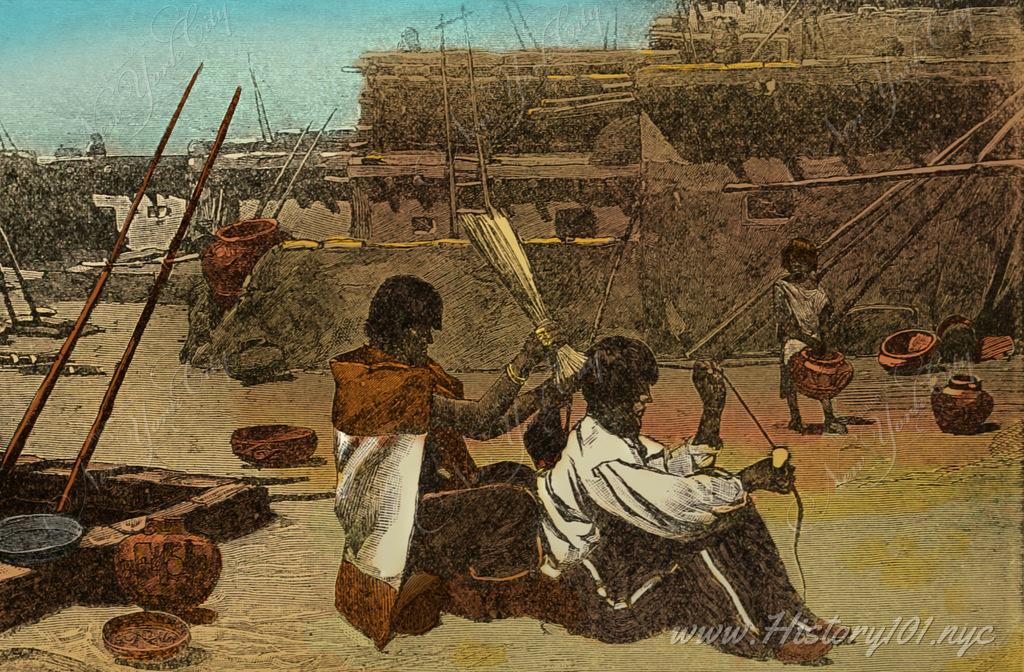
-5000: The Lenape Legacy: Pioneers of New York City's Pre-Dutch Era
Uncover the enduring legacy of the Lenape, whose culture and economy over 10,000 years played a pivotal role in the development of New York City
Timeline of New York City: From Pre-1600s to 21st Century
New York City's journey from pre-1600s, when Lenape-occupied lands characterized the area, to its current status as a leading metropolis, is a testament to its remarkable transformation and resilience. The natural wilderness that the Lenape thrived in was the groundwork for what evolved into a city celebrated for its adaptability and cultural diversity. With the Dutch establishing New Amsterdam in 1624, Manhattan burgeoned into an essential trading center, highlighting the city's origins. This pivotal era laid the foundation for New York's future as a global city, setting the stage for an unprecedented growth trajectory.
As the city transitioned to British control in the 1700s, it became central to colonial disputes and the fight for independence, playing a critical role in the American Revolution. The 1800s ushered in a wave of immigration and industrialization, marking a period of significant expansion. This era saw the construction of iconic structures like the Brooklyn Bridge and the Statue of Liberty, symbols of American innovation and New York’s openness to new beginnings. These developments underlined the city's growing infrastructure and its essence of embracing change.
The 20th century heralded New York City's emergence as a global hub for finance, culture, and politics, with the Empire State Building symbolizing its lofty ambitions. Despite encountering economic and social challenges in the late 20th century, New York's unyielding spirit enabled it to reaffirm its position as a financial and cultural powerhouse. This period of resilience highlighted the city's capability to overcome obstacles, maintaining its global allure and influence.
Entering the 21st century, New York City epitomizes technological innovation and enduring adaptability, constantly evolving to meet contemporary urban demands. This ongoing development underscores the city's historical and cultural significance, providing profound insights into urban evolution. New York's transformation from Lenape territory to a vibrant modern metropolis showcases the historical progress pivotal in shaping this dynamic, diverse city.
New York City's unparalleled growth from 1790 to 2020, maintaining its status as the most populous city in the United States, underscores its evolution into a major urban center. This period of expansion from a population of 33,131 to 8,804,190 highlights the city's magnetic pull, driven by its diverse economic opportunities, cultural richness, and global significance in finance and the arts. NYC's consistent ranking at the top reflects its dynamic ability to attract a broad demographic, contributing to its reputation as a melting pot of cultures and a beacon of innovation.
1790: Ranked 1st, Population: 33,131
1800: Ranked 1st, Population: 60,515
1810: Ranked 1st, Population: 96,373
1820: Ranked 1st, Population: 123,706
1830: Ranked 1st, Population: 202,589
1840: Ranked 1st, Population: 312,710
1850: Ranked 1st, Population: 515,547
1860: Ranked 1st, Population: 813,669
1870: Ranked 1st, Population: 942,292
1880: Ranked 1st, Population: 1,206,299
1890: Ranked 1st, Population: 1,515,301
1900: Ranked 1st, Population: 3,437,202
1910: Ranked 1st, Population: 4,766,883
1920: Ranked 1st, Population: 5,620,048
1930: Ranked 1st, Population: 6,930,446
1940: Ranked 1st, Population: 7,454,995
1950: Ranked 1st, Population: 7,891,957
1960: Ranked 1st, Population: 7,781,984
1970: Ranked 1st, Population: 7,894,862
1980: Ranked 1st, Population: 7,071,639
1990: Ranked 1st, Population: 7,322,564
2000: Ranked 1st, Population: 8,008,278
2010: Ranked 1st, Population: 8,175,133
2020: Ranked 1st, Population: 8,804,190
*The term "Ranked 1st" in the context of New York City's population growth from 1790 to 2020 indicates that New York City was the most populous city in the United States during each of those census years.
Over these three centuries, New York City's demographic milestones mirror its transformation from a burgeoning port into a global metropolis, underscored by its capacity to adapt and grow. Each census year not only marks an increase in population but also the city's enduring appeal to people worldwide, shaping its cultural and economic landscape. This growth trajectory not only showcases New York's role as a pivotal urban hub but also its influence on national and international stages, reflecting its ongoing significance in shaping urban development and cultural trends globally.
